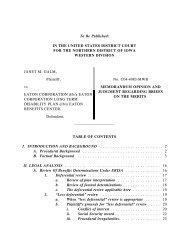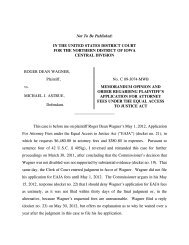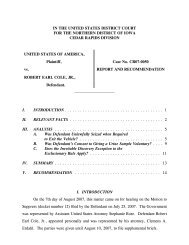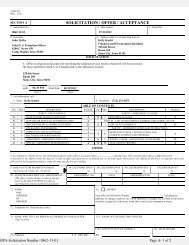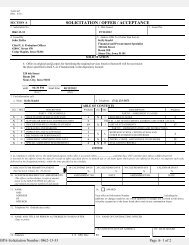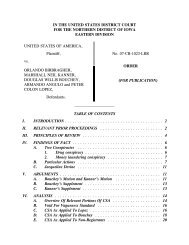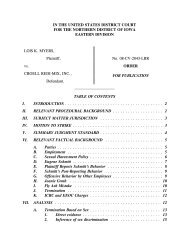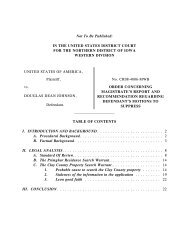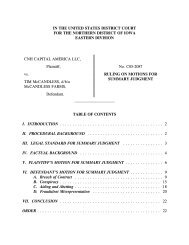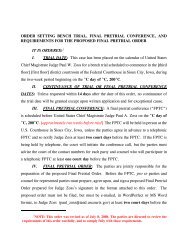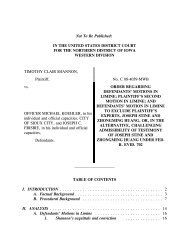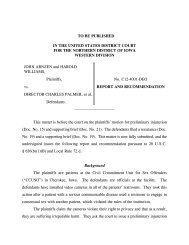To Be Published - Northern District of Iowa
To Be Published - Northern District of Iowa
To Be Published - Northern District of Iowa
Create successful ePaper yourself
Turn your PDF publications into a flip-book with our unique Google optimized e-Paper software.
After review <strong>of</strong> the evidence presented, the court<br />
concludes and agrees with Hess Grant [the introducing broker]<br />
that, under the Pershing option agreement, it was Pershing’s<br />
[the clearing broker’s] corresponding firm and agent for all<br />
plaintiffs’ options transactions. As introducing broker, Hess<br />
Grant was agent both to plaintiff and Pershing. Although<br />
plaintiffs have not sued Pershing, the transactions in question<br />
flowed or were to flow through that firm. The above<br />
enumerated options transactions cannot be said to exclude<br />
Pershings’ clearing or execution activity in plaintiffs’ accounts.<br />
It is yet possible that Pershing might be brought into the<br />
subsisting disputes as a necessary party. So long as that<br />
possibility exists, Pershing has the right to have any and all<br />
disputes as to options transactions it handled submitted to<br />
arbitration, including those between introducing broker and<br />
customer occurring during the period <strong>of</strong> its clearing agency<br />
agreement. In addition, by approving plaintiffs for options<br />
trading through Pershing, Hess Grant acted as a disclosed<br />
agent for Pershing. It follows that the arbitration provision in<br />
the Pershing Customer Agreement was applicable to options<br />
transactions disputes arising between plaintiffs and Hess Grant<br />
as Pershing’s agent. Mr. Okcuoglu had a clear understanding<br />
that any dispute involving Pershing, directly or indirectly,<br />
would be subject to arbitration. Accordingly, as to Counts I<br />
through VI, defendants’ motion to stay proceedings pending<br />
arbitration is granted.<br />
Okcuoglu, 580 F. Supp. at 751-52. Thus, the decision in Okcuoglu turned on fact-based<br />
determinations <strong>of</strong> the parties’ intent and the actual relationships between the introducing<br />
broker, the clearing broker, and the investors to determine that the introducing broker was<br />
the agent <strong>of</strong> the clearing broker.<br />
The decision in Cauble v. Mabon Nugent & Co., 594 F. Supp. 985 (S.D.N.Y.<br />
1984), applied an equally fact-driven analysis to the question <strong>of</strong> whether an introducing<br />
6



